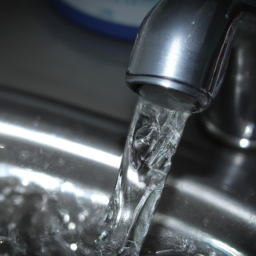Are you curious about how reverse osmosis water filters work? Well, buckle up because we’re about to take you on a fascinating journey into the world of water purification! A reverse osmosis water filter is an incredible system that uses a semi-permeable membrane to remove impurities, contaminants, and larger particles from your drinking water. It’s like a superhero for your water, ensuring that you have clear and purified H2O at your fingertips. In this article, we’ll delve into the nitty-gritty of how these filters work, from pre-filtration to post-filtration, and everything in between. Get ready to have your thirst for knowledge quenched as we explore the secrets of reverse osmosis water filters.
Pre-filtration
Before water enters the main reverse osmosis (RO) membrane, it goes through a pre-filtration stage. This stage is essential in removing larger particles and chemicals that can potentially damage the RO membrane and affect the effectiveness of the filtration process.
Sediment Filter
The first step in pre-filtration is the sediment filter. This filter is designed to trap larger particles such as sand, silt, and debris. These particles can come from various sources, including the water source itself or from the pipes and plumbing in your home. The sediment filter acts as a barrier, ensuring that these larger particles are removed before the water moves on to the next filtration stage. By removing these larger particles, the sediment filter helps to protect the RO membrane and prolong its lifespan.
Carbon Filter
After passing through the sediment filter, the water moves on to the carbon filter. The carbon filter plays a crucial role in removing chemicals and impurities that can affect the taste and smell of the water. Chlorine, which is commonly used in water treatment plants to disinfect water, can leave an unpleasant taste and odor. The carbon filter effectively removes chlorine as well as other chemicals, such as pesticides and volatile organic compounds (VOCs), ensuring that the water is pure and free from any unwanted flavors or odors. The carbon filter also helps to improve the overall quality of the water before it reaches the main RO membrane.
Reverse Osmosis
The reverse osmosis stage is the heart of the filtration system. It is during this stage that the water is forced through a semi-permeable membrane under pressure. The membrane is designed to allow only water molecules to pass through while capturing and removing a wide range of contaminants.
The semi-permeable RO membrane has tiny pores that are smaller than the size of many contaminants, including salts, heavy metals, bacteria, viruses, and dissolved solids. As water is pushed through the membrane, these contaminants are effectively trapped and separated from the water molecules. This process ensures that the purified water is free from harmful substances and contaminants, providing you with clean and safe drinking water.
Reverse osmosis is highly effective in removing a wide range of impurities and contaminants, making it one of the most efficient methods of water filtration available. The purified water that passes through the RO membrane moves on to the next stage for further treatment and polishing.
Post-filtration
After the reverse osmosis process, the purified water usually goes through another stage of filtration known as post-filtration. This stage is important for further improving the taste and quality of the water.
Carbon Filter
The post-filtration stage often includes another carbon filter. This filter helps to remove any remaining taste or odor that may be present in the water after the reverse osmosis process. Although reverse osmosis is highly effective in removing most contaminants, certain chemicals and impurities may still be lingering in the water. The carbon filter acts as a final polishing stage, ensuring that the water is fresh, clean, and tastes great. This additional filtration step provides an extra level of reassurance that the water you consume is of the highest quality.
Storage
To ensure that purified water is readily available, reverse osmosis systems typically include a storage tank. The reverse osmosis filtration process can be relatively slow, especially in comparison to other types of filtration systems. By storing the purified water in a tank, you have a convenient supply of purified water on-demand. This means that even if the filtration process is slow, you can still access and use purified water whenever you need it.
The storage tank is usually located under the sink or in a nearby cabinet, making it easily accessible for everyday use. It is important to regularly clean and sanitize the storage tank to maintain the quality and freshness of the stored water.
Drain or Waste
During the reverse osmosis process, for every gallon of purified water produced, a certain amount of water containing the concentrated contaminants is flushed away. This wastewater, also known as brine or waste water, is directed to the drain or waste system. This is a necessary part of the process to ensure that the contaminants and impurities that have been removed from the water are safely disposed of.
Although it may seem wasteful to discard a portion of the water, it is important to maintain the effectiveness of the reverse osmosis system. By flushing away the concentrated contaminants, the system can continue to produce high-quality purified water. Some more advanced reverse osmosis systems may have additional features that allow for the reuse or recycling of the waste water, minimizing water wastage and promoting sustainability.
Faucet Delivery
Once you turn on the dedicated faucet for the reverse osmosis system, water is drawn from the storage tank. The faucet is typically installed separately from your regular sink faucet and is dedicated solely for dispensing purified water. This ensures that you have easy access to purified water for drinking, cooking, and other everyday uses.
The faucet is designed to deliver purified water at a controlled flow rate, providing you with a consistent supply of high-quality drinking water. It is important to maintain and clean the faucet regularly to ensure the optimum performance and hygiene of the system.
Summary
In summary, a reverse osmosis water filter is a highly effective water purification system that utilizes a semi-permeable membrane to remove impurities and contaminants from drinking water. The process involves multiple stages, including pre-filtration, reverse osmosis, and post-filtration, to ensure the highest level of water purification.
During pre-filtration, sediment and carbon filters are used to remove larger particles and chemicals that can potentially damage the reverse osmosis membrane. The reverse osmosis stage is where water is forced through the membrane, effectively trapping and removing a wide range of contaminants. Post-filtration involves another carbon filter to further improve the taste and odor of the purified water.
The storage tank ensures that purified water is readily available on-demand, while the drain or waste system disposes of concentrated contaminants and impurities. The dedicated faucet allows for easy access to the purified water, providing a convenient supply for everyday use.
By understanding how reverse osmosis water filters work, you can make an informed decision about choosing a filtration system that meets your needs for clean and safe drinking water. Whether for your home or office, a reverse osmosis water filter can provide you with the reassurance of high-quality, purified water.

